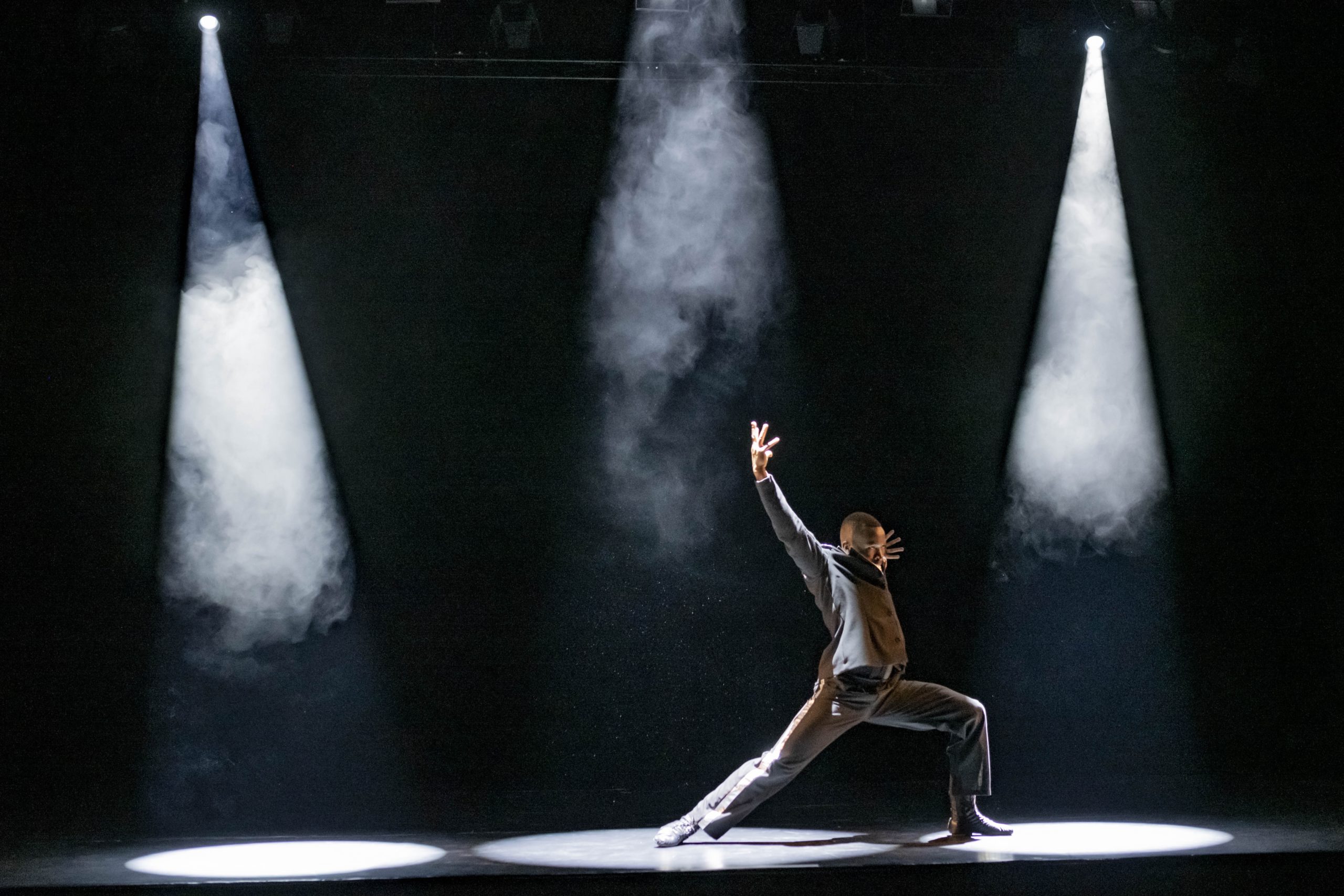Words by Sophie Chinner.
A quadruple bill of new work presented by Impermanence, a company I know best for bringing contemporary dance to stages in the South West. Tonight however, I watched them at Wiltons Music Hall, the oldest Grand Music Hall in the world, located in East London. Surprisingly similar to the Bristol Old Vic, Impermanence’s usual stomping ground, this saloon-like theatre became a Music Hall in 1859 despite the buildings origins dating back much earlier (!) Being sat in its auditorium in 2023 was a bit of a time warp – the ideal backdrop for a piece of work that looks back into the past, just as Venus does.
The night however opened with Cosmic Yogurt, a 17 minute trio paying homage to British surrealist artist Leonora Carrington. Surrealism of the piece itself was subtle despite its inspiration. Perhaps the most clear suggestion were the initial armless costumes, where performers were bound within fabric and performed funny little movements cut short by their physical lack of freedom. I connect this to Leonora’s restrictive experiences with aristocracy.
Vocal recordings of rather entertaining conversations with the artist, lip-synched by performer and choreographer of the work Roseanna Anderson, accompanies the soundtrack. In one, Leonora damns the interviewer for over-intellectualising her life and work – ‘some things just need to be felt’. I really do agree. Even as I am writing this, I question the purpose of it. How can I make a response to a live experience truthful of the experience I lived? Wasn’t it enough to simply ‘feel’ the work in the moment?
More questions than answers with the next work Feral. A short film directed by Joshua Ben-Tovim and composer Hollie Harding based on the book ‘Feral, Rewilding the Land, Sea and Human Life’ by George Monbiot – which I have now added to my Goodreads list.
Upon a fabric sheet spread across the stage, we witnessed beautiful visuals alluding to each of the elements – people dancing in castle ruins, upon the cliffs, close-ups of flowers and flowing water. Though the lack of tautness of the material distorted some of the visuals, I enjoyed the rippling effect. It was like the waves themselves had come to meet with the recordings. Yet, one of the most interesting talking points in the film was the decision to stagger the visual and aural endings. The screen goes black, the audience are left in darkness, the melody continues to play. A morbid symbol of the depletion of our planets natural environment which could sequentially lead us all into an eternal darkness…

Prior to the interval was one final live piece, Enemy of the Stars, again created by Joshua Ben- Tovim. A competitive duet adapted from Wyndham Lewis’s play ‘BLAST’, Kip Johnson and Kennedy Jr. Muntanga ‘fight’ with each other and simultaneously with themselves. Emotionally volatile, the pair embark on this highly physical, capoeira-esque way of communicating. Their relationship constantly shifting from the main stage to a lower levelled stage and from dealing with their own struggles to facing each others. As enemies or as lovers, they collide, crumple and collapse, suffering individually as well as together.
Impermanence’s Venus was a unique story to tell. The semi-factual / semi-fictional story followed our protagonist Mary Richardson characterised by Roseanna Anderson, in her journey from feminism to fascism. Despite some technical hitches (which actually somewhat complemented the work that is already fairly chaotic and comedic – shout out to writer Peter Clements), I admired the aspiration to tackle subject matter that is often rarely touched by dance.
A century ago the painting, Rokeby Venus, hanging on in the National Gallery was slashed with a meat chopper by suffragette, Mary Richardson, in an attack on the male gaze. A protest against the patriarchy. A ‘protest against the Government for destroying Mrs Pankhurst’, Mary’s own statement referring to Emmeline Pankhurst, leader of the Women’s Social and Political Union and whom Richardson was a devoted supporter of. Joshua Ben-Tovim narrated her story for us alongside help from Alessandro Marzotto-Levy who acted as compare for this biographical cabaret. Personally, I was really drawn into this world, into both the fantastical and the real elements which were depicted through shadow play, mine, dialogue and lip synching to recordings of real people who were all connected to Mary’s story, all beneath this umbrella of contemporary dace. The 60 minute piece could be condensed slightly, but perhaps I was a little fatigued at this point having already taken in 3 very different works in Act 1.
I wrote this review on the new moon in Taurus (if Astronomy is your thing); having been told by my esoteric sister that Taurus’ ruling planet is Venus. I then noticed that Venus was shining exceptionally bright in the sky that night; a coincidence to then have to write a piece alluding to this goddess…
